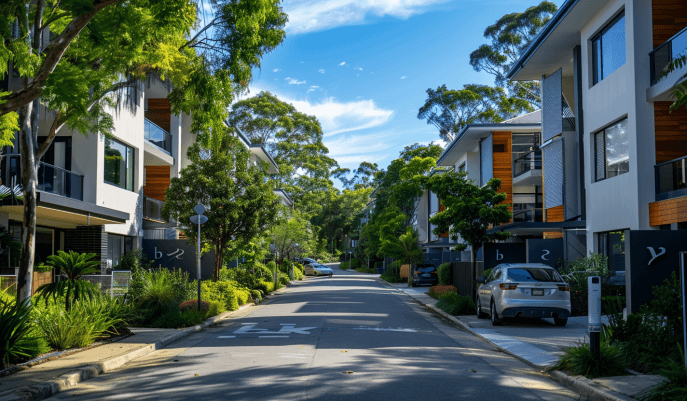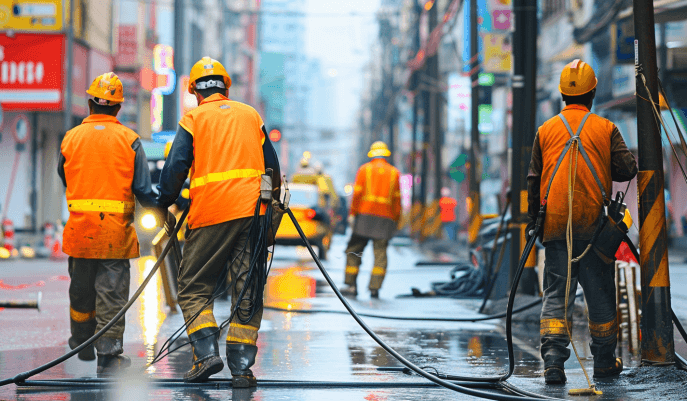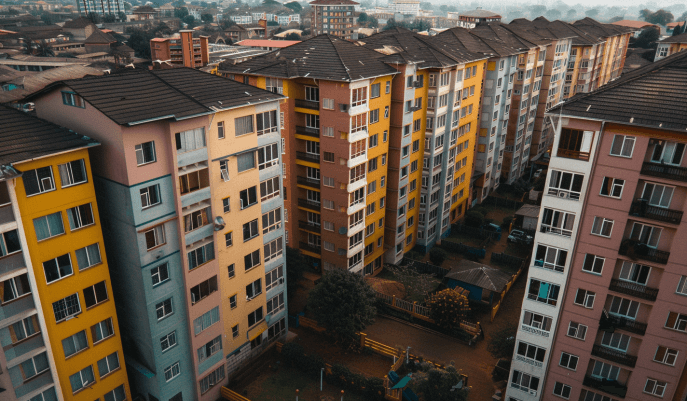- The proliferation of high rise apartments in Nairobi is becoming a pressing issue to a lot of residents.
- Effectively managing a growing population requires robust urban planning.
- As Nairobi continues to evolve, it must strike a balance between growth and maintaining the essence of what makes it a vibrant and desirable place to call home.
The proliferation of high rise apartments in the once considered leafy and affluent suburbs of Nairobi is slowly becoming a pressing issue. The number of towering complexes, leading to congestion, is a growing concern for many residents in these areas.
Before this current state, residents in many estates in Nairobi enjoyed safety, tranquility, privacy, and fresh air, among other amenities. Many of these estates were designed to be family-friendly.

Gated communities provided the security parents sought for their children, while safe play areas within the estates created an ideal environment for children to grow, interact, and make friends.
Table of Contents
What is Missing?
This significant transformation in these neighbourhoods has reshaped the way people live, leaving many feeling like a crucial element is missing. In the past, homes prioritised people’s comfort above all else. However, today’s apartment construction is primarily profit-driven, with little consideration for residents. Areas like Kilimani and Kileleshwa have witnessed a surge in apartments, often lacking basic amenities like proper lighting, especially with the involvement of many Chinese developers.
In response to these new developments, Kenyans have turned to social media to express their disappointments, sharing videos illustrating the closely packed nature of these apartments. Many now liken the once serene Kileleshwa and Kilimani to the future ‘Pipeline Estate’, one of the city’s most densely populated areas.
Recently, Nairobi County’s governor, Mr. Johnson Sakaja, defended his government against criticism of allowing high-rise buildings in Kileleshwa, Kilimani, and Lavington areas. He argued that the ever-growing population needs to be accommodated, and with a shortage of land, the only viable option is to develop more housing on existing land.
Speaking during a church service in Bahati Estate, he emphasized, “Nairobi is 696 square kilometers, and by 2050, the population will reach 10.5 million people. Since we can’t expand the city horizontally, the only way to accommodate this growth is by building upwards.” This shift in approach means that landlords will now be permitted to construct buildings up to 25 floors high, a significant increase from the previous limit of four floors per complex.
Governor Sakaja also pledged to implement changes to support this growth, including improving the sewage system to accommodate the increasing population, enhancing water supply to these new developments, and ensuring that the drainage system can handle the surge in numbers.
READ ALSO: Are Kilimani and Kileleshwa Suburbs Worth the Hype?
Where are we headed?
So, where are we headed as a county? The truth is, effectively managing a growing population requires robust urban planning. Drainage, water, and sewerage are not the only considerations the government must address when approving new construction. Factors like power supply and road infrastructure also demand careful consideration.

With strategic planning, I believe that these new apartments can cease to be a source of frustration for many, especially the existing residents. Singapore stands as a remarkable example of successful urban planning among other nations. Denis Binder, from Chapman University, delves into this comparison in his study titled The Deceptive Allure of Singapore’s Urban Planning to Urban Planners in America. He contrasts Singapore’s housing development with that of the United States.
According to Binder’s research, Singapore is a vibrant city-state with approximately 5.6 million people occupying a 278.6 square mile island. An impressive 82% of the population resides in public housing, mainly high-rise complexes, and works in high-rise office buildings. The city is encircled by twenty-three self-contained new towns along its coast, rendering it one of the most livable cities globally.
Singapore’s densely populated urban core is well-served by an extensive mass transit system, complemented by abundant greenery on rooftops, balconies, climbing walls, and greenbelts—a testament to meticulous urban landscaping. The government exerts substantial control over development, owning 90% of Singapore’s land, which has contributed significantly to its success.
READ ALSO: The Changing Face of Karen Neighborhood in Nairobi
Conclusion
Binder’s research underscores the undeniable success that can be achieved through proper urban planning. Singapore’s example vividly demonstrates how meticulous urban development, including high-density public housing, efficient mass transit systems, and abundant green spaces, can transform a city into one of the most liveable in the world.
The controlled and strategic approach to development, with significant government involvement and ownership of land, has not only accommodated a large population but has also enhanced quality of life and sustainability. It serves as a compelling model for other cities grappling with urban growth challenges, highlighting the importance of comprehensive planning and visionary governance in creating thriving and harmonious urban environments.
As Nairobi continues to evolve, it must strike a balance between growth and maintaining the essence of what makes it a vibrant and desirable place to call home.



